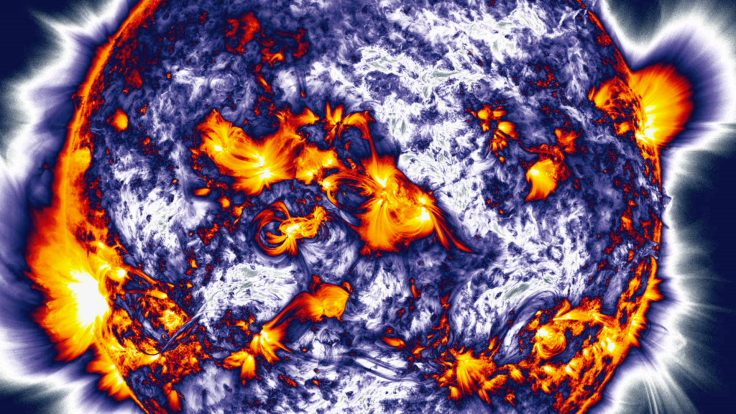Sun’s UV Radiation Is Decreasing, But That Won’t Slow Climate Change

The sun is going to stop sending as much energy to Earth later this century, but the decrease in heat will not be enough to mitigate climate changes occurring down here, according to researchers.
During the period of reduced radiation, the Earth’s ozone will thin out and affect the world’s temperatures and weather patterns.
Just like the sun has an 11-year cycle of activity — that shows itself in the patterns of sunspots, ejections of stellar material and other magnetic activity — it also goes through broader time periods of fluctuating intensity. The last time the sun reached a point of minimum energy within that larger period was the 17th century.
“Temperatures were low enough to freeze the Thames River on a regular basis and freeze the Baltic Sea to such an extent that a Swedish army was able to invade Denmark in 1658 on foot by marching across the sea ice,” the University of California, San Diego explained. “Scientists believe that the event is triggered at irregular intervals by random fluctuations related to the Sun’s magnetic field.”
The next minimum is expected in the middle of the 21st century.
A new study in the The Astrophysical Journal projects what that dip in solar radiation will be like, based on data from the International Ultraviolet Explorer satellite that NASA and the European Space Agency collaborated on and orbited Earth between 1978 and 1996. The scientists also used information about the radiation emitted by other stars.
According to their research, current sunspot patterns look similar to what they did before the “grand minimum” of 500 years ago.
They say it could be about 7 percent less intense than the amount of ultraviolet radiation typical for the lowest point in the sun’s 11-year cycle.
“Now we have a benchmark from which we can perform better climate model simulations,” researcher Dan Lubin said in the UCSD statement. “We can therefore have a better idea of how changes in solar UV radiation affect climate change.”
During the period of minimum radiation, people may see changes in the environment.
“The reduced energy from the sun sets into motion a sequence of events on Earth beginning with a thinning of the stratospheric ozone layer,” according to the university. “That thinning in turn changes the temperature structure of the stratosphere, which then changes the dynamics of the lower atmosphere, especially wind and weather patterns.”
While some areas cool down, others may heat up.
“An upcoming event would not stop the current trend of planetary warming but might slow it somewhat,” the university explained. “The cooling effect of a grand minimum is only a fraction of the warming effect caused by the increasing concentration of carbon dioxide in the atmosphere.”
© Copyright IBTimes 2024. All rights reserved.





















